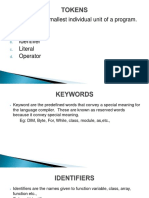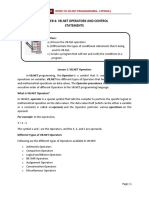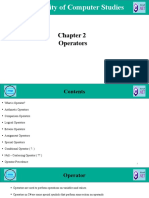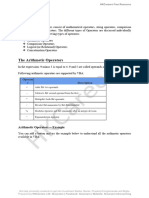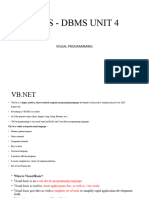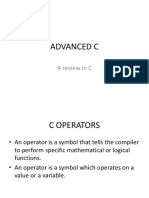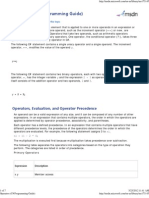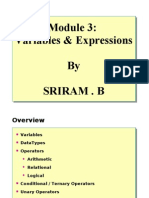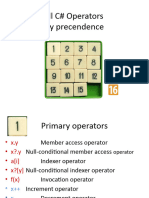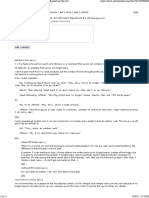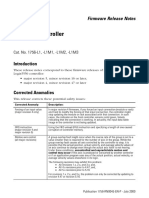0% found this document useful (0 votes)
32 views13 pagesOperators - Javatpoint
The document provides an overview of operators in VB.NET, explaining their purpose and categorizing them into types such as Arithmetic, Comparison, Logical, Bitwise, Assignment, and Concatenation Operators. Each operator type is described with examples demonstrating their usage in mathematical and logical operations. Additionally, it includes sample code snippets to illustrate how these operators function within VB.NET programming.
Uploaded by
PHẠM HỮU ÁICopyright
© © All Rights Reserved
We take content rights seriously. If you suspect this is your content, claim it here.
Available Formats
Download as PDF, TXT or read online on Scribd
0% found this document useful (0 votes)
32 views13 pagesOperators - Javatpoint
The document provides an overview of operators in VB.NET, explaining their purpose and categorizing them into types such as Arithmetic, Comparison, Logical, Bitwise, Assignment, and Concatenation Operators. Each operator type is described with examples demonstrating their usage in mathematical and logical operations. Additionally, it includes sample code snippets to illustrate how these operators function within VB.NET programming.
Uploaded by
PHẠM HỮU ÁICopyright
© © All Rights Reserved
We take content rights seriously. If you suspect this is your content, claim it here.
Available Formats
Download as PDF, TXT or read online on Scribd
/ 13




